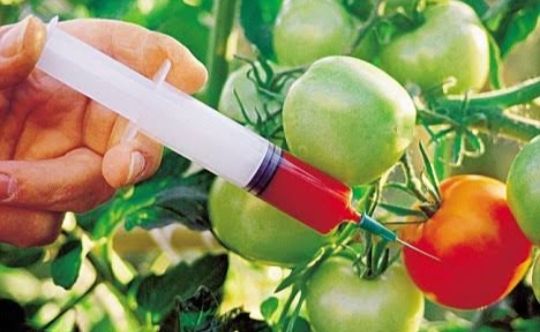Gm Crops/Food Controversy In India.
May 21, 2019 • 35 views

Genetic modification (GM) is the use of modern biotechnology techniques to change the genes of an organism, such as a plant or animal. In Australia, no one may ‘deal’ with a genetically modified organism (GMO) unless the Australian Gene Technology Regulator has concluded that the GMO is safe to human health and the environment.
GM crops.
As the world’s demand for food continues to increase plant breeders work to breed better yielding crop varieties. They use a range of methods including conventional breeding, mutagenesis, genetic modification, and marker aided selection to breed new improved crop varieties. Genetic modification allows plant breeders to produce a crop variety that could not be bred using conventional breeding.
Genetically Modified Crops. For centuries, farmers have bred crops for certain desirable traits. ... Examples of GM crops include corn varieties containing a gene for a bacterial pesticide that kills larval pests, and soybeans with an inserted gene that renders them resistant to weed-killers such as Roundup.
GM crops are made through a process known as genetic engineering. Genes of commercial interest are transferred from one organism to another. Two primary methods currently exist for introducing transgenes into plant genomes. The first involves a device called a 'gene gun'.
What is the science behind GM (genetically modified) crops?
In 1950s scientists Watson and Crick, discovered the DNA double-helix model. After this discovery scientists had started thinking that it was possible to manipulate the DNA features of an organism to create new traits in them by borrowing genes from other organisms and mixing it with theirs.
In the case of GM food, scientists insert into a plant’s genome one or several gene from another species of plant or even from a bacterium, virus or animal. This is to inject desired traits such as pest-resistance or Vitamin A (as in the case of golden rice).
Is GM food unsafe?
GM crops have been criticized by a number of medical professionals and other scientists for leading to serious health conditions and increasing chemical herbicide use. After a strict order from the Central Information Commission, the GEAC made a mockery of public consultations, through a perfunctory and opaque eyewash process.
Arguement against GM (genetic modifications).
There are arguments against GM food that are economic and social in nature. Experts of organic farming have voiced serious concern about multinational agribusiness companies.
This would mean a loss of autonomy over the manner in which agriculture itself is practiced, with increased dependence on GM seed companies and herbicides manufactured by them, putting the financial strain on farmer households.
There are also concerns regarding loss of food biodiversity if corporate food varieties begin to flood the markets.
There have been numerous severe deficiencies in the evaluation process of GM mustard. The risks to health, environment, and agriculture have not been evaluated.
If GM mustard is now introduced, who will lose? Every Indian who consumes mustard in any form, as s/he will also consume the herbicide residues on it; the millions of poor women who depend on weeding to support their family who will be displaced; the bee keepers whose honey will be contaminated; farmers whose yields will fall eventually as bees die out; and the Indian nation, which will find that it has lost its seed diversity and the international competitive advantage of its non-GM mustard and honey.
Arguments in Favor of GM (genetic modifications ).
The main argument made in favor of GM mustard is increased yield.The argument says that GM crops produce more yields. And it is backed by a handful of experiments. The examination of these experiments has been hardly done.
A farmer, we know very well, will not say whether a new hybrid/variety is good or bad until he has planted them and seen the results or he is properly informed about the crops.
But, it is the irony that such an environment has been created today where he is being denied the chance to make an informed judgment by those who don’t really farm for a living. So, GM crops can be welcome if the farmer agrees with it.
